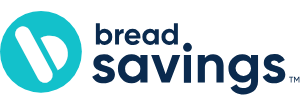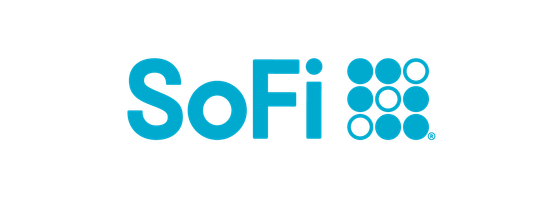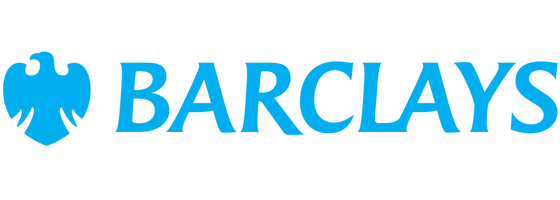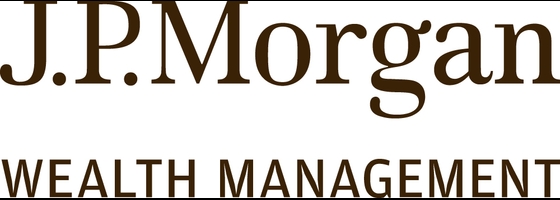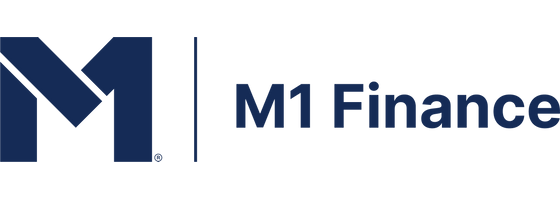8 Ways to Invest $1,000

Our evaluations and opinions are not influenced by our advertising relationships, but we may earn a commission from our partners’ links. This content is created by TIME Stamped, under TIME’s direction and produced in accordance with TIME’s editorial guidelines and overseen by TIME’s editorial staff. Learn more about it.
Whether planning for retirement or saving for a large purchase, investing can help you turn money into more money. The good news is that you don't need a pile of cash to get started.
Here are eight of the best ways to invest $1,000 to help grow your money over time.
It's a good idea to tackle your high-interest debt before investing in anything else. After all, the interest rate you pay on that debt is probably much higher than you'd earn investing in the stock market.
While you won't actually make any money, you'll save on monthly interest payments. You can then use the money you saved to spend or invest elsewhere. Paying off debt could also help improve your credit score, leading to better rates and deals on loans, credit cards, and more.
One way to consolidate high interest debt is with a balance transfer credit card.
card_name is a solid flat-rate earnings card with annual_fee_disclaimer annual fee. Although the 1.5% cash back doesn’t seem impressive at first glance, it becomes more valuable when combined with other rewards cards from Chase that can be redeemed for a far greater value.
This card is recommended for everyday use, whether for doctor copays or big box store purchases. It can be a large earner for cardmembers who want to get the most out of their everyday spending.
Introductory Offer:
Intro Card Rewards:
After the First Year or $20,000 Spent Card Rewards:
Additional Benefits:
Member FDIC
An emergency fund helps you stay afloat financially when you have unexpected costs or a sudden drop in income from a job loss or reduced hours at work. Without an emergency fund, you might have to rely on a high-interest credit card or personal loan to get by.
Experts generally recommend saving three to six months of living expenses. Instead of keeping that money in a piggy bank, consider stashing it in a high-yield savings account. The money will be there when you need it, and you'll earn a decent return in the meantime.
The best high-yield savings accounts offer some of the highest returns in years, with many paying a 5% annual percentage yield (APY) or more. Even if you already have an emergency fund, a high-yield savings account can be a smart place to park your $1,000 while researching and comparing your investment options. You'll be less tempted to spend the cash if it's tucked safely in a savings account, and you'll earn a better rate than a checking account pays.
Up to $300 Bonus Tiered Disclosure New and existing Checking and Savings members who have not previously enrolled in Direct Deposit with SoFi are eligible to earn a cash bonus of either $50 (with at least $1,000 total Direct Deposits received during the Direct Deposit Bonus Period) OR $300 (with at least $5,000 total Direct Deposits received during the Direct Deposit Bonus Period). Cash bonus will be based on the total amount of Direct Deposit. Direct Deposit Promotion begins on 12/7/2023 and will be available through 1/31/2026. Full terms at sofi.com/banking. SoFi Checking and Savings is offered through SoFi Bank, N.A., Member FDIC. SoFi members with Direct Deposit can earn 4.00% annual percentage yield (APY) on savings balances (including Vaults) and 0.50% APY on checking balances. There is no minimum Direct Deposit amount required to qualify for the 4.00% APY for savings (including Vaults). Members without Direct Deposit will earn 1.20% APY on savings balances (including Vaults) and 0.50% APY on checking balances. Interest rates are variable and subject to change at any time. These rates are current as of 12/3/2024. There is no minimum balance requirement. Additional information can be found at http://www.sofi.com/legal/banking-rate-sheet.
APY disclosures: SoFi members with Direct Deposit or $5,000 or more in Qualifying Deposits during the 30-Day Evaluation Period can earn 4.00% annual percentage yield (APY) on savings balances (including Vaults) and 0.50% APY on checking balances. There is no minimum Direct Deposit amount required to qualify for the stated interest rate. Members without either Direct Deposit or Qualifying Deposits, during the 30-Day Evaluation Period will earn 1.20% APY on savings balances (including Vaults) and 0.50% APY on checking balances. Only SoFi members with direct deposit are eligible for other SoFi Plus benefits. Interest rates are variable and subject to change at any time. These rates are current as of 12/3/24. There is no minimum balance requirement. Additional information can be found at http://www.sofi.com/legal/banking-rate-sheet.
Fee Policy: We do not charge any account, service or maintenance fees for SoFi Checking and Savings. We do charge a transaction fee to process each outgoing wire transfer. SoFi does not charge a fee for incoming wire transfers, however the sending bank may charge a fee. Our fee policy is subject to change at any time. See the SoFi Checking & Savings Fee Sheet for details at sofi.com/legal/banking-fees/.
A certificate of deposit (CD) is a time deposit that pays a fixed interest rate until the CD matures, typically in three to 60 months. You'll owe an early withdrawal penalty if you need your cash before the CD matures, so CDs are best for money you won't need immediately.
While longer CDs traditionally pay the highest rates, short-term CDs have offered some of the best rates in 2024—in excess of 5%—meaning you can lock in a great rate without tying up your money for too long. Ultimately, CDs are a low-risk way to earn a little interest on your $1,000.
Traditional and Roth individual retirement accounts (IRAs) are tax-advantaged accounts that help you save for retirement. Traditional IRA contributions are in most cases tax deductible in the year you make them, and you pay taxes when you withdraw money during retirement.
Roth IRAs work differently. They don't have the up-front tax break, but qualified distributions in retirement are tax free, even on your earnings. For this reason Roth IRAs are often the better choice if you think you'll be in a higher tax bracket in retirement than you are in now. Financial advisors offer can help you create a withdrawal strategy to minimize taxes in retirement.
For 2023 you can contribute up to $6,500 to an IRA or $7,500 if you're 50 or older. The limits increase to $7,000 and $8,000 in 2024. While $1,000 isn't enough to max out an IRA for the year, it's a good start, especially because that money could potentially grow for decades. Once you fund an IRA, you decide how to invest the money in the account, whether you buy stocks, bonds, index funds, or target-date funds, which automatically rebalance as you get closer to retirement.
One of the best ways to invest $1,000 is to get your 401(k) match if your employer offers this benefit. Some employers match contributions on a dollar-for-dollar basis, while others provide a partial match, usually up to a certain percentage of your salary. Either way, if you add $1,000 to your 401(k), your employer might match the entire amount, adding free money to your retirement account that could grow tax free or tax deferred for years.
INVESTMENT AND INSURANCE PRODUCTS ARE: NOT A DEPOSIT • NOT FDIC INSURED • NO BANK GUARANTEE • MAY LOSE VALUE
J.P. Morgan Wealth Management is a business of JPMorgan Chase & Co., which offers investment products and services through J.P. Morgan Securities LLC (“J.P. Morgan”), a registered broker dealer and investment adviser, member FINRA and SIPC. TIME Stamped is a publisher of J.P. Morgan, (“Publisher”). The Publisher will receive compensation from J.P. Morgan if you provide contact details to speak with a J.P. Morgan representative. Compensation paid to the Publisher will be up to $500 per completed contact form. Compensation provides an incentive for the Publisher to endorse J.P. Morgan and therefore information, opinions, or referrals are subject to bias. J.P. Morgan and the Publisher are not under common ownership or otherwise related entities, and each are responsible for their own obligations. Investing involves market risk, including possible loss of principal, and there is no guarantee that investment objectives will be achieved.
A robo-advisor uses a computer algorithm to create a diversified portfolio based on your goals, risk tolerance, and time horizon. Many offer features such as automatic rebalancing and tax-loss harvesting, and some let you connect with human advisors.
A robo-advisor makes sense if you don't have the time, interest, or skill to choose and manage your investments. The good news is that you don't need much money to get started. Robo-advisors such as M1 Finance have a minimum investment of $25 to trade or $500 to open a retirement account.
$4 monthly fee or 0.25% annual fee
Brokerage accounts such as Robinhood let you invest in stocks, exchange-traded funds, bonds, options, mutual funds, cryptocurrencies, commodities, futures, and more. Most offer a range of tools and amenities to help you research, trade, and manage your investments, often with low minimum opening deposits. To get started compare the best online brokers, paying attention to account minimums and whether the broker offers fractional shares—a plus if you're starting with a small account balance.
While $1,000 may not seem like much, it's enough cash to start growing your money and securing your financial future, especially if investing becomes a habit. Don’t let small amounts prevent you from earning larger ones down the road.
For example, say you invest $1,000 in an IRA when you're 20 years old. If you don't contribute more money to the account, it will be worth about $88,000 when you reach age 65, assuming a 10% annual rate of return, not a particularly impressive amount for 45 years of saving.
However, imagine starting with a $1,000 contribution but not stopping there. Instead, save that same $1,000 every year. In this case you'll have contributed $46,000 instead of $1,000 at age 65, and your account will have grown to more than $922,000, thanks to the power of compounding.
Investing can help you turn your money into more money, even when you start small. A $1,000 investment—whether you pay down debt, invest in a robo-advisor, or get your 401(k) match—can help lay the foundation for a prosperous financial journey.
The best way to invest $1,000 depends on your financial situation. If you have high-interest debt, putting your $1K toward paying it off—or at least paying it down—makes financial sense. Next, focus on building or topping off an emergency fund (if you don't have one already) of three to six months’ worth of living expenses, in case you lose your job or have unexpected expenses, such as home repairs or medical bills. If you have leftover money, consider stashing it in an IRA or a 401(k) to help build your retirement nest egg.
There's no easy way of turning $1,000 into $10,000. The average stock market return is about 10% per year, according to SmartAsset. At that rate it would take 24 years to amass $10,000.You can speed up the process by adding to your original investment. For example, by investing an extra $50 each month, you'll reach $10,000 in nine years, not 24, assuming the same 10% annual return. Of course, choosing riskier stocks with higher potential rewards can help you reach your goal even faster, but there's a greater chance you'll lose your entire investment.
Instead of investing in the stock market, consider investing in yourself to boost your earning potential. Self-investment can set you up for professional growth, whether you take a class, learn a new language, or expand your network at a conference. With an extra skill or certification on your résumé, you can ask for a well-deserved raise, qualify for a promotion, or look for a better job elsewhere.
One of the easiest ways to double $1,000 is to invest it in a 401(k) and get the employer match. For example, if your employer matches your contributions dollar for dollar, you'll get a $1,000 match on your $1,000 contribution. Matching contributions are essentially free money, so it's always a good idea to stash enough in your 401(k) to get the full match.
If you have an extra $1,000, spending it on something you don't need can be tempting. However, a better option is to use the money to improve your financial situation. Paying down your high-interest debt is an excellent place to start, as it can eliminate (or at least reduce) the interest charges you pay each month. If you have any leftover cash, consider parking it in an IRA or a 401(k) to help build your retirement savings.
The information presented here is created by TIME Stamped and overseen by TIME editorial staff. To learn more, see our About Us page.
